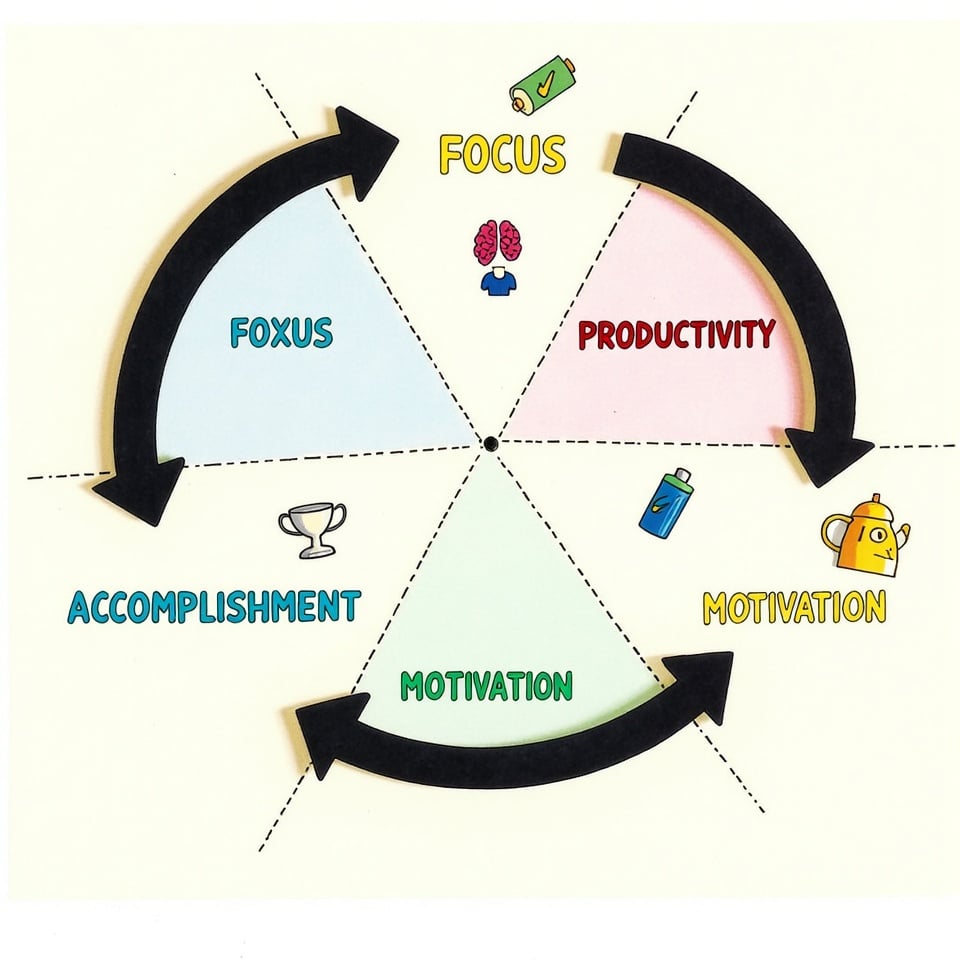Ready to take your writing to the next level?
Look no further. This comprehensive guide will help you master complex sentences in record time.
The best part?
We’re not just rehashing old grammar rules. This is your go-to resource for understanding and crafting complex sentences in 2024, packed with up-to-date, practical knowledge that you can apply immediately.
Why focus on complex sentences?
Because they’re the secret weapon of skilled writers. They allow you to express intricate ideas, show relationships between concepts, and add sophistication to your prose. Whether you’re a student, a professional, or an aspiring author, mastering complex sentences will elevate your writing game.
In this guide, we’ll cover everything from the basic structure of complex sentences to advanced techniques for seamlessly integrating them into your work.
Table of Contents
Ready to transform your writing and express your ideas with greater depth and clarity? Let’s dive into the world of complex sentences and unlock your full potential as a writer.
What is a Complex Sentence?
A complex sentence combines an independent clause with one or more dependent clauses, expressing intricate relationships between ideas.
The independent clause is a complete thought that can stand alone, while the dependent clause relies on the independent clause for meaning.
These clauses are joined by subordinating conjunctions (e.g., “because,” “although,” “when”) or relative pronouns (e.g., “who,” “which,” “that”).
For example: “Although it was raining heavily (dependent clause), we decided to go for a walk (independent clause).”
Complex sentences allow for nuanced expression, showing cause-effect, contrast, conditions, or temporal relationships. They add depth to writing, enhancing communication of intricate thoughts and arguments.
Examples of Complex Sentences
- Time Relationships:
“When the sun finally set, the temperature dropped rapidly.”
Here, “When the sun finally set” is the dependent clause, indicating when the main action occurred.
- Cause and Effect:
“Because she studied diligently, Sarah aced her final exams.”
The dependent clause “Because she studied diligently” explains the reason for the independent clause.
- Contrast:
“Although he was exhausted, John decided to finish his project.”
The dependent clause introduces a contrasting idea to the main clause.
- Condition:
“If it rains tomorrow, we’ll have to cancel the picnic.”
The “if” clause presents a condition that affects the outcome in the main clause.
- Relative Clauses:
“The book, which was written in the 19th century, still resonates with modern readers.”
The relative clause provides additional information about the subject of the main clause.
- Concession:
“Even though the odds were against them, the team managed to win the championship.”
The dependent clause acknowledges a contradicting fact, yet the main clause states an unexpected result.
- Purpose:
“She took extra classes so that she could graduate early.”
The dependent clause explains the purpose or intention behind the action in the main clause.
- Result:
“The music was so loud that we couldn’t hear each other speak.”
The dependent clause describes the result or consequence of the situation in the main clause.
- Manner:
“He spoke softly, as if he were afraid of being overheard.”
The dependent clause describes how the action in the main clause was performed.
- Location:
“Wherever you go, you’ll always find kind people.”
The dependent clause introduces a general location, with the main clause making a statement about that location.
How to Identify a Complex Sentence?
Identifying a complex sentence involves recognizing its key components and structure. Here’s a guide to help readers identify complex sentences:
1. Look for Multiple Clauses
The first step in identifying a complex sentence is to look for more than one clause. A complex sentence will always have at least two clauses – one independent and one or more dependent.
2. Identify the Independent Clause
Find the part of the sentence that can stand alone as a complete thought. This is the independent clause. It should have a subject and a verb and express a complete idea.
3. Spot the Dependent Clause(s)
Look for clauses that cannot stand alone as complete sentences. These dependent clauses will have a subject and a verb but won’t express a complete thought on their own.
4. Check for Subordinating Conjunctions
Complex sentences often begin with subordinating conjunctions. Common ones include:
- Because, since, as (showing reason)
- Although, though, even though (showing contrast)
- If, unless (showing condition)
- When, while, before, after (showing time)
- So that, in order that (showing purpose)
5. Look for Relative Pronouns
Complex sentences may also contain relative pronouns introducing dependent clauses. These include:
- Who, whom, whose (referring to people)
- Which, that (referring to things or animals)
6. Examine Sentence Structure
In a complex sentence, the dependent clause can come before or after the independent clause. If it comes before, it’s usually followed by a comma.
7. Test for Dependency
Try reading the clauses separately. If one doesn’t make sense on its own, it’s likely the dependent clause in a complex sentence.
8. Contrast with Other Sentence Types
Remember that complex sentences are different from:
- Simple sentences (one independent clause)
- Compound sentences (two or more independent clauses joined by coordinating conjunctions)
- Compound-complex sentences (at least two independent clauses and one or more dependent clauses)
9. Consider the Meaning
Complex sentences often express more nuanced relationships between ideas than simple sentences. They might show cause and effect, contrast, or temporal relationships.
Structure of Complex Sentence
The structure of a complex sentence is a key element in understanding how these sentences function.
Let’s break down the components and arrangement of complex sentences:
Basic Structure:
A complex sentence consists of two main parts:
- An independent clause (main clause)
- One or more dependent clauses (subordinate clauses)
Independent Clause:
- Contains a subject and a predicate
- Expresses a complete thought
- Can stand alone as a sentence
Dependent Clause:
- Contains a subject and a predicate
- Does not express a complete thought
- Cannot stand alone as a sentence
- Begins with a subordinating conjunction or a relative pronoun
Connecting Elements:
Complex sentences use specific words or phrases to connect the clauses:
- Subordinating Conjunctions:
These words introduce dependent clauses and show the relationship between the dependent and independent clauses.
Examples include:
- Because, since, as (reason)
- Although, though (contrast)
- If, unless (condition)
- When, while, before, after (time)
- So that (purpose)
- Relative Pronouns:
These introduce relative clauses, which provide additional information about a noun in the main clause.
Common relative pronouns are:
- Who, whom, whose (for people)
- Which, that (for things or animals)
Arrangement:
The order of clauses in a complex sentence can vary:
- Dependent Clause + Independent Clause:
“Although it was raining, we went for a walk.”
Note: A comma usually separates the clauses in this arrangement.
- Independent Clause + Dependent Clause:
“We went for a walk although it was raining.”
Note: No comma is typically needed in this arrangement.
- Embedded Dependent Clause:
“The book, which was written in the 19th century, is still popular today.”
Note: Commas often set off non-essential embedded clauses.
Punctuation:
Proper punctuation is crucial in complex sentences:
- Use a comma when the dependent clause comes before the independent clause.
- Generally, no comma is needed when the independent clause comes first.
- Use commas to set off non-essential dependent clauses within the sentence.
Multiple Dependent Clauses:
A complex sentence can have more than one dependent clause:
“When the alarm went off, Sarah, who was a light sleeper, woke up immediately.”
Simple vs Complex Sentence
When we communicate through writing, we use various types of sentences to convey our ideas effectively. Two common sentence structures are simple sentences and complex sentences. Understanding the difference between these can significantly enhance your writing skills.
A simple sentence contains just one independent clause, meaning it expresses a complete thought with a subject and a predicate. For example:
“The cat sleeps.”
This sentence has one subject (the cat) and one predicate (sleeps). It’s straightforward and conveys a basic idea.
On the other hand, a complex sentence combines an independent clause with one or more dependent clauses. A dependent clause, also known as a subordinate clause, cannot stand alone as a complete thought. For instance:
“While the cat sleeps, the mice play.”
In this complex sentence, we have an independent clause (“the mice play”) and a dependent clause (“While the cat sleeps”). The dependent clause adds extra information but cannot stand alone as a complete sentence.
The key difference lies in the structure and the amount of information conveyed. Simple sentences are direct and to the point, while complex sentences allow for more nuanced expression by showing relationships between ideas.
Using a mix of simple and complex sentences in your writing can create rhythm and variety, making your text more engaging and easier to read.
Complex sentences are particularly useful when you want to show cause and effect, contrast ideas, or provide additional context to your main point.
How to write a Complex sentence
Writing a complex sentence may seem challenging at first, but with practice, it becomes a valuable tool in your writing arsenal. Here’s a step-by-step guide to help you construct effective complex sentences:
- Start with an independent clause:
Begin with a complete thought that can stand alone as a sentence.
For example:
“The students studied hard.”
- Add a subordinating conjunction:
Introduce a dependent clause by using a subordinating conjunction such as “because,” “although,” “while,” or “if.”
For instance:
“Because they wanted to pass the exam,”
- Complete the dependent clause:
Finish the thought introduced by the subordinating conjunction:
“Because they wanted to pass the exam, the students studied hard.”
- Ensure proper punctuation:
If the dependent clause comes first, use a comma to separate it from the independent clause. If the independent clause comes first, a comma is usually not necessary:
“The students studied hard because they wanted to pass the exam.”
- Vary the structure:
You can create complex sentences with the dependent clause at the beginning, middle, or end of the sentence.
This variation adds interest to your writing:
- Beginning: “While the sun was setting, we finished our picnic.”
- Middle: “The hikers, although they were tired, continued their journey.”
- End: “We decided to stay indoors because it was raining heavily.”
- Use relative pronouns:
Another way to form complex sentences is by using relative pronouns like “who,” “whom,” “whose,” “which,” or “that” to add information about the subject or object:
“The book, which was written by a local author, became a bestseller.”
Conclusion
Complex sentences are crucial for effective writing, combining independent and dependent clauses to express intricate relationships between ideas.
They are identifiable by subordinating conjunctions, relative pronouns, and clause relationships, offering flexibility in arrangement for emphasis and style.
These sentences function to convey time, cause-effect, contrast, and other complex relationships. Mastering complex sentences enhances language proficiency, enabling clearer expression of sophisticated thoughts in various writing contexts.
When used judiciously, they elevate prose, creating dynamic and nuanced text that engages readers and conveys ideas with precision and depth.
To further enhance writing quality, consider using AI writing tools like Blainy. This versatile platform assists in editing essays, research papers, and articles, helping users avoid common mistakes and streamline their writing process.
Blainy’s features include an AI essay writer, AI essay expander, AI summarizer, writing suggestions, a citation library, and plagiarism detection. To experience these benefits and improve your writing, visit blainy.com and sign up today.
Frequently Asked Questions (FAQs)
What are 5 examples of complex sentences?
Here are five examples of complex senten
- Although it was raining heavily, we decided to go for a hike.
- When the alarm went off, Sarah jumped out of bed.
- The book that I bought last week is already a bestseller.
- Because he studied diligently, John aced his final exam.
- While the children were playing in the park, their parents prepared a picnic lunch.
2. How do you identify a complex sentence?
To identify a complex sentence:
- Look for multiple clauses (at least two).
- Identify one independent clause that can stand alone as a complete sentence.
- Find at least one dependent clause that cannot stand alone.
- Check for subordinating conjunctions (e.g., because, although, when) or relative pronouns (e.g., who, which, that) introducing the dependent clause.
- Ensure the sentence expresses a more complex relationship between ideas than a simple sentence would.
3. What words are in a complex sentence?
Complex sentences typically incorporate subordinating conjunctions (e.g., because, although, when), relative pronouns (who, which, that), and standard sentence components (subjects, verbs, objects). They may also include transitional phrases (moreover, however) to enhance flow. Punctuation, particularly commas, plays a crucial role, especially when the dependent clause precedes the independent clause. This diverse array of elements allows complex sentences to express intricate relationships between ideas, making them a versatile tool for sophisticated writing.
4. What is the difference between a simple and complex sentence?
Simple sentences and complex sentences differ in structure and the depth of ideas they convey. A simple sentence has one independent clause with a single subject and predicate, expressing a basic thought, like “The cat sleeps on the couch.” A complex sentence combines an independent clause with at least one dependent clause, using subordinating conjunctions or relative pronouns to connect them. For example, “While the cat sleeps on the couch, the dog plays in the yard.” This structure allows for more nuanced expression of relationships between ideas, such as cause and effect or time sequences. Simple sentences are concise and direct, while complex sentences offer greater sophistication in conveying intricate thoughts and connections in writing.







